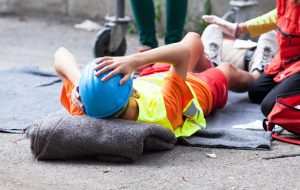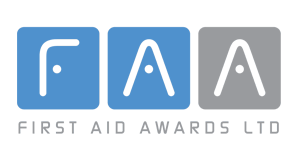The simple answer is that accidents happen, and they can be terrifying and potentially life-threatening when they do. Knowing first aid can be the difference that saves someone from significant injury or death.
It all sounds very dramatic, doesn’t it? But first aid skills can be as simple as removing a splinter and stopping it from becoming infected. They also know the correct response to a colleague having an epileptic seizure or a heart attack.
As a first aider, you are not a doctor or expected to be one. Instead, you are the onsite person with the knowledge to help someone while waiting for the emergency services to arrive. At CPN Training, we offer first aid training courses
How Knowing First Aid Helps
Knowing first aid helps save lives, from what to do with a choking baby to assisting coworkers in an industrial accident. A Red Cross survey showed that first aid given before emergency service arrival helped prevent 59% of deaths from injuries sustained.
Giving first aid can mean the difference between a short term injury or a more extended, potentially life-changing disability. In addition, providing first aid at the scene influences the recovery time of an injured person. For example, considering a fall at a construction site. Knowing not to move the injured person and check for obvious signs of injury facilitates a better recovery for the patient.
The appropriate intervention of a first aider can reduce the length of time someone needs to be in the hospital.
Knowing the basics of first aid can stop a medical situation from deteriorating further. For example, consider a patient with a deep cut. Stemming blood loss by applying pressure will significantly improve the situation. This action done correctly will prevent the patient from deteriorating and help stabilise them until emergency services arrive.
Training in first aid assists in knowing how to prioritise injuries, essential in a multiple-accident situation. It also equips the trained first aider in minor injury care from ice packs on a sprained ankle to competent bandaging. These actions also reduce the time spent at a hospital, allowing the more seriously injured priority.
Clear, concise information is essential for decision-making in emergencies. Training as a first aider also teaches you what to communicate to the emergency services or doctors to facilitate their actions.
How Training In First Aid Benefits You
You learn essential skills on a first aid course. Learning these skills provides you with the confidence to act in an emergency. Responding to situations calmly, organised, and efficiently. These traits help calm injured people. Keeping calm and reducing panic is known to reduce the pain they are experiencing.
Taking a first aid course alerts you to the potential for accidents. It makes you more aware of potential hazards in the workplace and at home and ways to reduce health risks.
Becoming the first aider is empowering. The knowledge and skills learnt from any of our first aid courses equip you with the confidence to deal with emergencies—emergencies that can occur at any time, any place, so be prepared. Enrol on a first aid course now.












